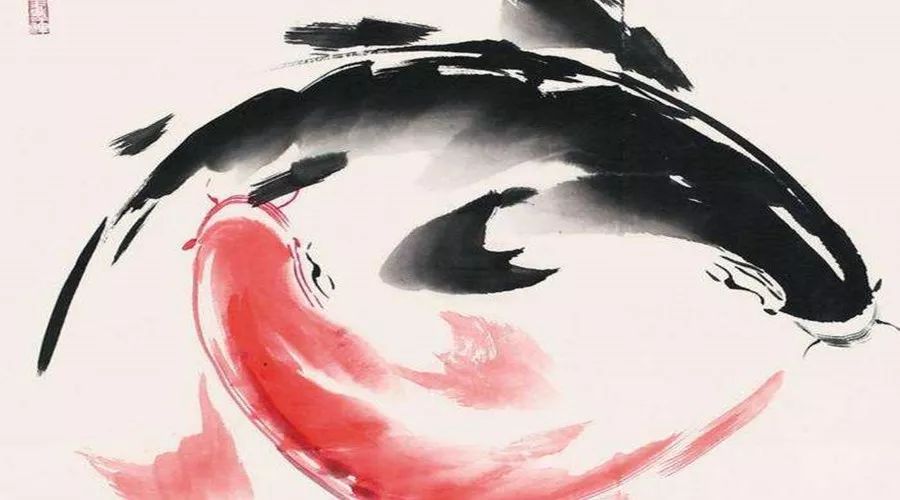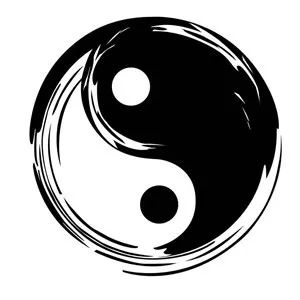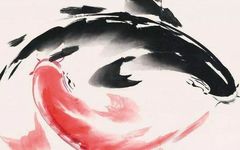

Comprehensive Collection of TCM Classics >>>【TCM Treasure】Mobile App: Free Download + Free Use


Editor’s Note
|
The theory of Yin and Yang runs through all aspects of Traditional Chinese Medicine (TCM) theory, primarily used to explain the structure, physiological functions, and pathological changes of the human body, and to guide the diagnosis and treatment of diseases.
The balance of Yin and Yang is fundamental to life; the purpose of health preservation is to maintain the balance of Yin and Yang. If Yin and Yang are balanced, the body can be healthy; if they are imbalanced, the body will become ill, age prematurely, or even die. So how can we balance Yin and Yang to maintain health? |
Yin and Yang represent the relationship of opposition and unity, transformation and change, and mutual generation and restriction, which permeates all things in nature. This relationship is the source and law of physiological and pathological occurrences, developments, and changes in the human body. Those who grasp the laws of transformation of Yin and Yang can adapt to the changes of natural laws and hold the key to health preservation.
What is Yin and Yang?
The theory of Yin and Yang originated from the I Ching, which describes the creation of the universe by Fuxi (Tai Chi). After thousands of years of development, it has formed an independent theory of Yin and Yang. In the I Ching, it is the gene of all things, and in TCM, it is the “foundation of the eight principles”. It is the origin of Chinese culture. Yin and Yang run through all things in nature, representing two interconnected aspects of a single entity, summarized through the ancient people’s observations of nature, transformation of nature, and their struggles against diseases.
People summarize the complex changes in nature and biological evolution using these two elements of Yin and Yang. This simplifies complex issues while continuously improving and forming a unique academic system of Yin and Yang. Everything is categorized by Yin and Yang; for example, movement, ascension, warmth, brightness, and exuberance belong to Yang, while stillness, inwardness, descent, coldness, darkness, and tranquility belong to Yin.
Yin and Yang still play a leading role in TCM theory and are an irreplaceable theoretical system in TCM diagnosis and treatment. The Suwen states: “A good diagnostician observes color and pulses, first distinguishing Yin and Yang.” Due to the omnipresence and oppositional unity of Yin and Yang, as well as their changing yet regular characteristics, we can explain all changes in things using Yin and Yang. Some natural phenomena and laws can be interpreted through Yin and Yang, and the diagnosis and treatment of diseases can be guided by Yin and Yang, while health preservation methods can also be analyzed through Yin and Yang.
Application of Yin and Yang
The Suwen states: “Yin and Yang are the way of heaven and earth, the principles of all things, the parents of change, and the source of life and death.” This fully explains that all changes in things follow the laws of Yin and Yang. The occurrence and development of all things can be interpreted through Yin and Yang. The Huangdi Neijing uses the mutual relationship of Yin and Yang changes to analyze the physiological and pathological changes of the human body and explores their essential laws. TCM also relies on the theory of Yin and Yang to guide the diagnosis of diseases and understanding of disease progression. As long as one understands Yin and Yang and the properties of things, one can grasp the balance of Yin and Yang within the body and its integration with natural laws, thus achieving the goal of health preservation.
Yin and Yang is the Key to Understanding Health Preservation
People are aware of the importance of health preservation, pursuing exercise, Qigong, and dietary health. The exploration of health preservation theories has become a trend and is easily accepted by people. Some say that exercise can lead to longevity, while others advocate for quietness for longevity, some recommend vegetarianism, while others suggest a balanced diet of grains and vegetables for longevity. In fact, all methods and theories of health preservation are inseparable from Yin and Yang; only the regulation and balance of Yin and Yang is the best health preservation, and health preservation is essentially about nurturing Yin and Yang.
Yin and Yang is the key to understanding health preservation. The I Ching states: “The way of Yin and Yang is the way of principles and laws.” Yin and Yang encompasses all the laws of change in nature and the mysteries of life. The Huangdi Neijing points out: “Therefore, the wise in health preservation must follow the four seasons and adapt to cold and heat, harmonize emotions, and find a suitable dwelling. They must regulate Yin and Yang and balance hardness and softness.” By following the changes of the four seasons, adjusting to the transformations of Yin and Yang, and adapting to the spring’s growth, summer’s flourishing, autumn’s harvest, and winter’s storage, one can adjust clothing, exercise, and dietary structure to adapt to cold and heat, thus achieving balance of Yin and Yang and ensuring health preservation.

Harmonizing emotions and finding a suitable dwelling is a form of emotional health preservation. TCM has theories such as “joy harms the heart” and “anger harms the liver,” both of which can lead to a state of Yin deficiency and Yang excess, disrupting the balance of Yin and Yang and lowering immunity. Therefore, one should maintain calmness in significant matters and remain unperturbed by honor or disgrace; one should be adept at regulating emotions, calming grievances, and embodying loyalty, integrity, and kindness; one should practice forgiveness, tolerance, and courtesy. A good cultural environment is cultivated through good qualities; “to let others is to let oneself, to love others is to love oneself.” Only in this way can we achieve “regulating Yin and Yang and balancing hardness and softness.”
By mastering the relationship of opposition and mutual restriction, interdependence, and transformation of Yin and Yang, we hold the key to health preservation and wellness. Using this to interpret and guide our health preservation, we must achieve a balance between movement and stillness; movement represents Yang, while stillness represents Yin. Movement stimulates the body’s vital energy and organ functions, resulting in vitality. Stillness nourishes Yin and Yang, moistens the organs, and preserves the essence. Movement and stillness must be in relative balance; extremes in either direction are detrimental. As long as movement and stillness are moderated, Yin and Yang can be balanced.
Secondly, the integration of heaven, earth, and humanity is essential. Heaven (Qian) represents Yang, while earth (Kun) represents Yin. Humans exist within this framework, connecting with the energy of heaven above and the energy of earth below. Essentially, this means merging oneself with nature. Any exercise confined within a gym is not as beneficial as engaging with nature. For all practitioners of internal health preservation, there is a method: embracing the energy of nature with both hands, from the Baihui (Hundred Meetings) point at the top of the head, through the chest, and into the abdomen, focusing on the Dantian (Elixir Field). This practice achieves the best integration of humans with nature, promoting the flow of meridians and the regulation of Yin and Yang. Therefore, whether walking, running, swimming, or practicing martial arts, all activities should ideally be conducted outdoors in environments with good air quality, as this integration of heaven, earth, and humanity will lead to health preservation over time.
Thirdly, maintaining the balance of Yin and Yang is crucial. The balance of Yin and Yang represents a relatively stable and dynamic equilibrium; it is not static. If certain factors disrupt this balance, it can lead to the transformation of Yin and Yang, resulting in abnormal states of “extreme opposites.” For example, a patient with hypertension may have stable blood pressure after treatment, but if an unexpected event causes emotional excitement and they cannot adjust in time, the Yang excess may reach an extreme (extreme opposites), leading to diseases such as stroke or coronary heart disease. Therefore, by grasping the exercise methods that combine movement and stillness, cultivating lifestyle habits that align with natural laws, adjusting dietary structures reasonably, and maintaining a good mindset and emotions, one can achieve a balance of Yin and Yang through both movement and stillness, tension and relaxation, and hardness and softness.
Fourthly, familiarizing oneself with the laws of Yin and Yang changes and timely adjusting Yin and Yang is essential to achieving the goal of health preservation.
Through long-term social practice, people have summarized the laws of Yin and Yang changes. For instance, during the day, morning represents Shao Yang (Lesser Yang), noon represents Lao Yang (Greater Yang), evening represents Shao Yin (Lesser Yin), and night represents Lao Yin (Greater Yin). Daytime is Yang, while nighttime is Yin. Therefore, our lives, exercises, and work should adapt to these changes in Yin and Yang, achieving movement during Yang and stillness during Yin. Some health preservation exercises are more suitable in the morning and evening, while midnight and noon are times of transition in the energy of heaven and earth, requiring stillness and minimal movement to maintain the balance of Yin and Yang. In the four seasons, spring and summer represent Yang, while autumn and winter represent Yin. By grasping the transformations of Yin and Yang across the seasons, we can adapt to the changes of the four seasons and the cold and heat, ensuring that our clothing, food, housing, and transportation align with the seasonal changes of Yin and Yang, achieving timely adaptation to the seasons and temperatures.
For example, in summer, when the body’s Yang energy is growing, one should maintain a slight perspiration to allow Yang energy to disperse, thus keeping Yin and Yang balanced and reducing the likelihood of illness. If one spends all day in a low-temperature air-conditioned environment, Yang energy cannot disperse, or if one works in high temperatures and sweats excessively, it can lead to an imbalance of Yang energy, resulting in the extreme opposites of Yin and Yang and causing illness, which may also create the potential danger of “summer diseases manifesting in winter.” Therefore, one must practice “nurturing Yang in spring and summer, nurturing Yin in autumn and winter,” following the seasons, adapting to cold and heat, and regulating Yin and Yang to truly decode the key to health preservation and achieve the highest realm of health preservation and wellness.
|Author Introduction|
Chen Dingrong, Member of the Party Committee and Deputy Director of the Health Bureau of Taizhou City, responsible for office, medical administration, TCM, association work, as well as urban and rural community health and medical institution reform.
Source: Health Preservation Monthly (2014-5), images from the internet
-
298 sets of TCM video courses available for free sharing
-
[Zeng Shiqiang] Complete video collection (free download and sharing)
[TCM Treasure App] Over 700 TCM ancient and modern books available for online/offline reading

Click the upper right corner  Share with friends,let more people see!
Share with friends,let more people see!
★ The above content is for reference only; if you have any physical discomfort, please seek medical attention at a regular hospital.★

